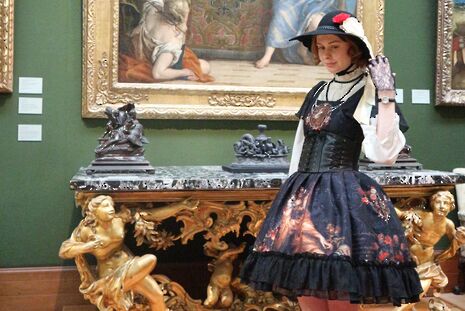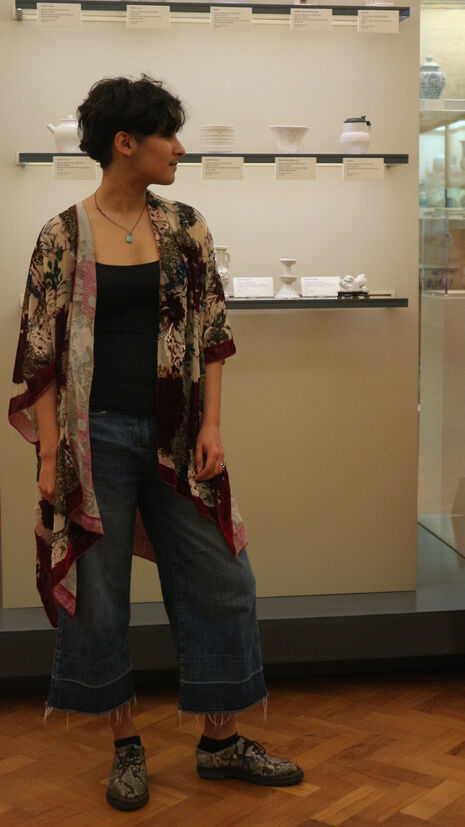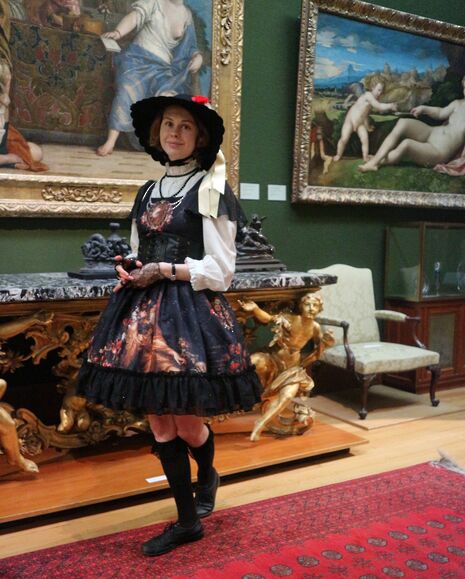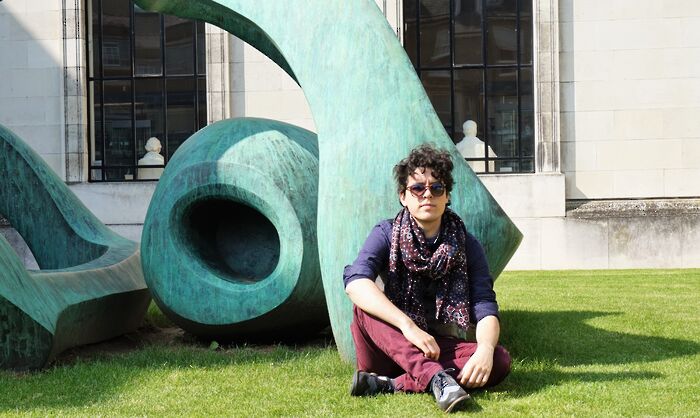Creativity through costume
Style is about far more than just looking nice, it can provide a unique outlet for creative self-expression and a way to challenge expectations and norms

Last week, I touched upon the importance of breaking the binaries in fashion. That can mean a lot of different things, and a lot, emotionally, to each individual. Presentation can be as political as it is personal, as personal as it is aesthetic. By featuring only two people this week, I’m going to be able to delve a little deeper into what that can look like.

Sophia
‘There isn’t a big story about the kimono; once a year my family goes to this boutique little hotel in the countryside. It’s one of those really small, very middle-class towns and they have this second-hand store where everything is really posh. I picked this up there.
‘The shoes I’ve had for about a year—they became my go-to item, and now they’re completely falling apart. They don’t have a heel, or a sole, and they’re not watertight so whenever it rains my feet get wet—but I can’t bear to part with them.
“Presentation can be as political as it is personal, as personal as it is aesthetic”
‘My grandma has a matching necklace to this one; she picked it up in China, and it’s jade. It’s a really lovely necklace and I’ve only done ever taken it off once; for a play last term.
‘The hair is interesting: I’d kind of wanted to cut my hair short for a long time, but I was very conscious that being bisexual, it’s “such” a statement. I really didn’t like the connotations of that. Also because I’m Indian, you don’t see very many Indian women with short hair, and I was very aware of that, and I didn’t want to stick out even more, especially in Cambridge, which is so white. But, eventually, I just did it anyway, although it took a lot of confidence and courage! I really like it now; it gets complimented a lot, so it’s done lots of good for my ego, but it took a while to get up to that point.’

Lily
‘I’m wearing a dress from a Chinese brand, made in a particular style originating in Harajuku in Japan. I like it because I’ve always liked historical fashion, and dressing up. This kind of style features a lot of pink frilly dresses, and also by contrast, very gothic items. I don’t really do the pink stuff, so I like the subset which is sort of Classical, Victorian, or Alice in Wonderland. The garments are often quite expensive or hard to get a hold of; most of mine come from EBay, or online sales groups on Facebook. I obviously don’t dress exactly like this every day, but I like to wear clothes that are pretty – which for me usually means lots of lace. It’s not necessarily very comfortable going everywhere in a huge petticoat.
‘The painting on the skirt is by Dante Gabriel Rossetti, one of the Pre-Raphaelite painters. It’s called ‘The Roman Widow’. I really love Pre-Raphaelite art, and Art History in general, and Rossetti is one of my favourite painters. So when I saw that someone was selling the dress on a Facebook group I was very excited and had to have it immediately! It’s quite unusual in that it’s sort of black, but not really in the Gothic style: it’s more colourful, and there’s part of a poem on there—but I don’t think it’s Rossetti’s, I don’t know where it’s from.
‘I think this brand had a show at a fashion week somewhere, even though they’re quite alternative. Lots of people are worried that the subcultures are dying out—but more than ever it feels like small brands are springing up and branching out: things have moved more into Classical Baroque, which I like, although I can’t afford. I often make small things myself, like extra collars or headdresses. Because I’m interested in historical fashion, I’d really like to look more and gain inspiration from the cuts of dresses which were popular in the early 1900s, with high necks—you don’t always see that kind of thing. Of course, being in Cambridge doesn’t give me much room to go around all dressed up, but there is a community of people interested in this genre of style here. I’ve been to a couple of meet-ups with them, which was really nice.’
‘Style’ can encompass more than just the clothes we wear, it can represent our spirit; it can be brave, it can be creative. It is personal—and originality, individuality, the taboo or the strikingly unusual can all cross over, and create something fascinating.
 News / CUP announces funding scheme for under-represented academics19 December 2025
News / CUP announces funding scheme for under-represented academics19 December 2025 News / Cambridge welcomes UK rejoining the Erasmus scheme20 December 2025
News / Cambridge welcomes UK rejoining the Erasmus scheme20 December 2025 Film & TV / Timothée Chalamet and the era-fication of film marketing21 December 2025
Film & TV / Timothée Chalamet and the era-fication of film marketing21 December 2025 News / SU reluctantly registers controversial women’s soc18 December 2025
News / SU reluctantly registers controversial women’s soc18 December 2025 News / News in Brief: humanoid chatbots, holiday specials, and harmonious scholarships21 December 2025
News / News in Brief: humanoid chatbots, holiday specials, and harmonious scholarships21 December 2025









